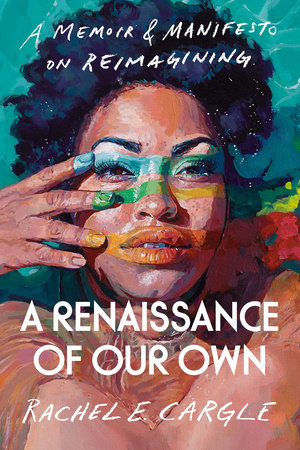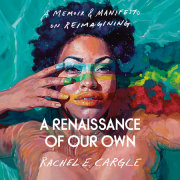Introduction
A Journey to Reimagining There are points in time that can divide our lives into a “before” and an “after.” A moment when a line of demarcation is drawn, after which the lens through which you look at the world permanently shifts. Usually, these moments come unbidden, when you least expect them. For me, it arrived during a bicycle ride in Phoenix, Arizona, in the spring of 2017.
Biking through the Phoenix Arts District one afternoon while heading back to the color-washed hostel I’d been staying in on Ninth Street, I found myself deep in thought. Balancing my iced coffee in one hand and steering with the other, I let my mind wander. I was a bit awestruck by the afternoon I’d spent at a museum, a visit I’d expected to be insightful but that had also turned out to be deeply moving. For the last several weeks, I’d been indulging in all the goodness Phoenix offered, witnessing how the desert moon rises high, long before sunset. The city was one of many stops on a backpacking trip I’d decided to take the leap on, and I’d just toured the Pueblo Grande Museum and Archeological Park. The park is home to a replication of a thousand-year-old indigenous village of adobe homes arranged communally in compounds that allowed people to hunt, fish, cook, eat, gather, build, work, play, and celebrate together. The Hohokam people had figured out a way to exist—communally and simply, with intention and innovation—that mirrored what I was craving: a way of life I hadn’t yet witnessed but that I deeply longed for. The museum made clear this way of existing had been possible all along and had been achieved with great efficiency in societies past.
As I considered how many other undiscovered ways there must be to live and how many existences I might learn about, honor, and borrow from, I heard my phone ping. Still dreaming of the sloping, sand-colored arches of the Hohokam village that married function and form so beautifully, I pulled over to read a text from a friend. She informed me that a photo of me from the 2017 Washington, D.C., Women’s March that had gone viral months before had been posted to the Instagram account of Afropunk, a Black-centered news and cultural commentary outlet.
Several months before, like so many women horrified at the election of Donald Trump, I had made my way to the nation’s capital to protest. Along with friend and fellow feminist Dana Suchow, I had organized a busload of women to travel to D.C. and join the voices opposing the misogyny, racism, and xenophobia the Trump administration represented.
That photo of Dana and me—a white woman and a Black woman side by side in front of the Capitol Building, each with a protest sign in one hand and a fist held up to the sky in homage to the iconic photo of Gloria Steinem and Dorothy Pitman Hughes—had made the rounds on social media, thrusting me into a national conversation on feminism. Our signs were the crux of most conversations. Dana’s read, PROTECT: BLACK, ASIAN, MUSLIM, LATINX, DISABLED, TRANS, FAT, POOR WOMEN. Mine read, IF YOU DON’T FIGHT FOR ALL WOMEN, YOU FIGHT FOR NO WOMEN. For weeks following the march, that photo had been brandished as a shining example of intersectional feminism and solidarity, with responses to it being quite positive and affirming—but the communities and sites where it had been circulating were frequented mostly by white women.
Afropunk, however, had an almost exclusively Black readership.
I began reading the comments posted there. The responses were starkly different from the celebratory reactions given to us on predominately white platforms. One after another, Afropunk’s commenters called out the fallacy of white feminism, questioning why I, a Black woman, was so dedicated to a movement that had never truly been for me. Some of the comments practically shouted for me to open my eyes to the whitewashing and racism of the feminist movement. I felt blindsided and utterly embarrassed at the thought of how much I hadn’t known back when I organized the march, along with a deep sense of responsibility to better understand, to unearth what I hadn’t yet discovered.
I will forever be grateful that I happened to be traveling when I got this wake-up call. While I had always known there were flaws in the feminist movement, this moment of realization would send me crashing into a reckoning with the depths of hypocrisy and betrayal in the movement as well as a reckoning with myself. Having only a small suitcase and a backpack to my name, and stripped of familiar surroundings, I was open to what I didn’t already know about the world, to different ways of thinking and being. The education I’d just received about the Hohokam people at the Pueblo Grande Museum—completely unknown to me until that day—prepared me for an exploration of what I did and didn’t understand about white supremacy and the feminist movement. It began a reimagining of a more honest, more critical worldview.
Over the next several months, I dove into reading, researching, and considering my place in the world more critically, as I’d never really taken the time to do. I dug into the feminist movement, all the way down to its roots, so I could examine what lay beneath. I had to shapeshift my understanding, replacing the whitewashed version of the movement I had once believed accurate with an ugly truth that dismissed both the pain and powerful activism of Black women and other women of color.
Once I learned the truth about the contributions of Black women activists in the fight for women’s rights and freedoms—trailblazers like Anna Julia Cooper, Mary Church Terrell, and Ida B. Wells—I studied their blueprints for disrupting the status quo. I realized I had so much to learn from my intellectual ancestors. The truths of the past were opening up a new, more authentic path for me to forge in my own burgeoning activist career.
Inevitably, the process of reexamining
myself unfolded. I began excavating the depths of who I thought I was and allowing a new version of myself to step forward. I didn’t yet have the language or tools for it, but what I was doing was reimagining both myself and the lens through which I viewed the world and its possibilities. It wouldn’t be the first time I’d done so, but it was the first time it happened with so much intention and so publicly.
My gut instinct during the whirlwind of these discoveries was to share what I was learning. My social media posts became tools for unlearning what many of us had always taken as truth. As I shared my own personal evolution and the facts I was learning on feminism and racism, my audience grew by tens of thousands, drawing in folks of all stripes who were invested in learning, unlearning, and reimagining alongside me. I became someone people looked to as they explored this intersection of race, womanhood, and identity and considered the possibilities of how we might reimagine it all as we moved forward together. And in 2018 this virtual community expanded to include real-life camaraderie when I kicked off my first public lecture, which I eventually presented all over the country, from North Carolina and Oregon to New England and Los Angeles.
Along the way, I recognized that a critical element of reimagining our totality, within and beyond movement work, is to identify and question the values handed to us by society, our parents, the media, and our educational and economic systems. I began to make room to ask myself:
Is this something I really want to claim? Is there a better way? What can I wield with my hands to exist within my values? To answer these questions, I began paying attention to my thoughts and daydreams and noting the experiences that brought me joy or that made me yearn for more. What made me feel grounded, satisfied, energized, and true? With ongoing self-reflection, I discovered and defined my own set of values—values that would supplant those I had inherited from a world shaped by whiteness, capitalism, misogyny, and scarcity. I landed on a trio of guideposts, or what I call my “highest values”—ease, abundance, and opportunity—that became integral to every decision I made thereafter, whether tiny or towering. (You’ll spend some time later identifying your own highest values.)
Aligning how I moved through the world with these highest values—and with knowledge, empathy, and action—completely changed how I showed up in my relationships, at work, and for myself. It made space for me to live based not on expectation, routine, or the traditional markers of “success,” but on what
I value most. Encouraged by this clarity, I experimented with new and inspired ways of existing, working, playing, resting, and loving that didn’t always line up with what was expected of me.
Copyright © 2023 by Rachel E. Cargle. All rights reserved. No part of this excerpt may be reproduced or reprinted without permission in writing from the publisher.









